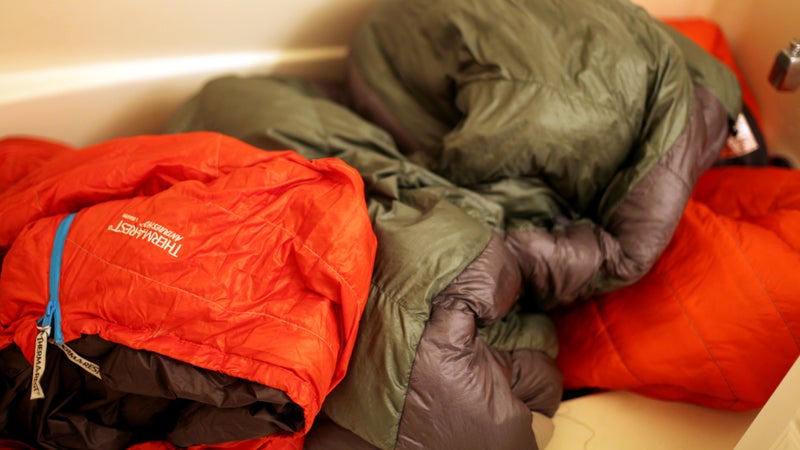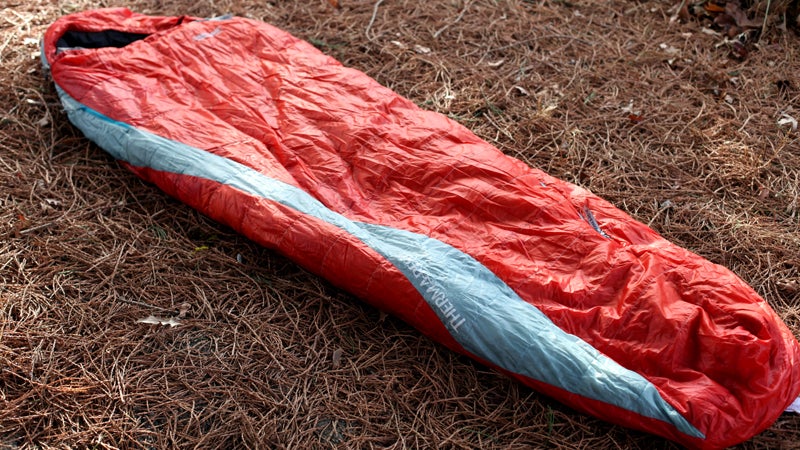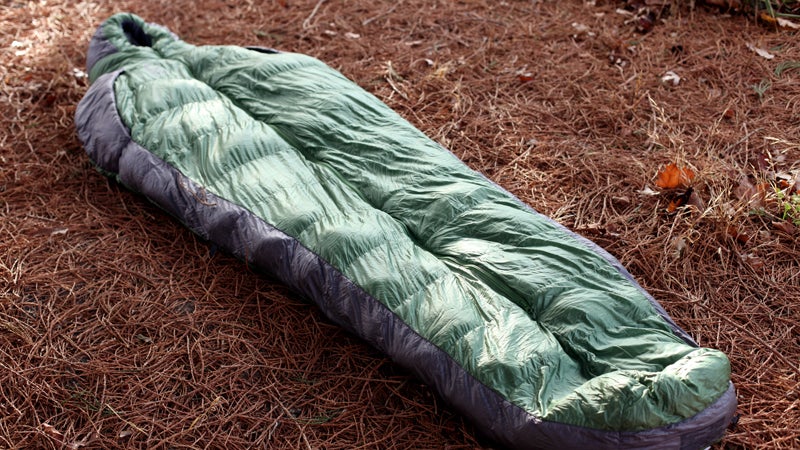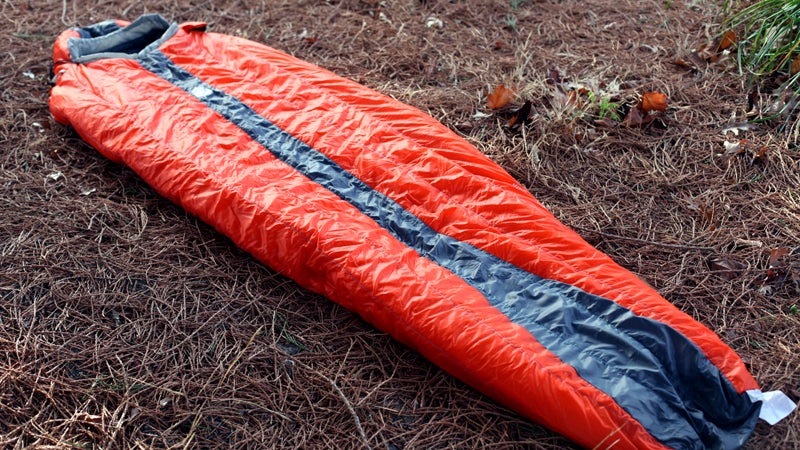This is one of the most contentious subjects in the outdoor gear world. In general, a down bag packs smaller, weighs less, and is warmer than a synthetic one. But down is worthless if it gets wet, and it’s increasingly expensive. To remedy this, companies started treating down with hydrophobic chemicals so it would dry faster and work better when wet.
So which is right for you—treated down or synthetic?
That’s where our test comes in. We found that, when dry, each of the following bags worked as advertised—they kept us warm within a certain temperature range. But we wanted to see what happened when we added moisture to the equation.
The Test

I reviewed a trio of three-season sleeping bags—two filled with treated down and one with synthetics—and pitted them against each other in a head-to-head test. I focused on comfort and warmth when wet and tested how quickly they dried after being submerged in water.
For the soak test, I camped at Donner Summit on a snowy, 30-degree night. I dunked each sleeping bag three times into a plastic bin filled with water, then stripped down to my underwear and tested how long I could stay in the wet bag. Here are the results:
Therm-a-Rest Antares 15F Down Sleeping Bag ($380)

Fill Type: 750-fill Nikwax-treated down
Outside Tested Weight: 2 pounds, 8.2 ounces
Dry Time: Approximately 5 hours
Time I Spent in the Wet Bag: 30 minutes
The Verdict: The Antares was warmer when wet than the other treated down bag I tested, the Sierra Designs Mobile Mummy. This was thanks in part to the hood, which cinched down tighter than the hoods on the other sleeping bags.
The Antares also dried the fastest of the group, and the 30-denier nylon exterior felt tougher than the fabric of the other two. If you’re looking for a traditional three-season down mummy bag, the Antares is a good option.
Sierra Designs Mobile Mummy 800 3-Season ($380)

Fill Type: DownTek-treated down
Outside Tested Weight: 2 pounds, 6.3 ounces
Dry Time: Approximately 5.5 hours
Time I Spent in the Wet Bag: 23 minutes
The Verdict: Sierra Designs made a radical departure from traditional sleeping bag design this year, creating products you can almost wear, thanks to arm and leg holes. I initially thought the system looked gimmicky—wouldn’t cold air creep into the bag through the zipperless arm openings?
In short, no. The bag is as comfortable and warm as Sierra Designs promises. The openings didn’t let in any cold air, a result of the extra swaths of insulation that cover them.
The Mobile Mummy took the longest to dry and performed the worst when soaked. But it was also the most hydrophobic of the group: It didn’t get saturated as quickly as the other two bags.
Big Agnes Wind Lip 28 ($170)

Fill Type: Pinneco Core synthetic insulation
Outside Tested Weight: 2 pounds, 11 ounces
Dry Time: Approximately 8.5 hours
Time I Spent in the Wet Bag: 47 minutes
The Verdict: This is the heaviest bag on the list, but it kept me by far the warmest when it was wet—the material touching my skin felt warm at around the 15-minute mark. I was impressed by how efficiently the no-draft collar blocked the cold whether it was wet or dry.
As for the Pinneco Core insulation, it’s a breathable membrane that moves moisture from your body out of the bag. If you’re a paddler like me who plans to bring a sleeping bag on multiday raft or kayak trips, this is your best option. Apparently synthetics still have the edge over down when it comes to camping in the rain and snow. The Wind Lip is also less than half the price of the other bags I tested.
To sum, we found that down—even treated down—still does not perform as well when wet as a synthetic fill. But if you’re camping in a dry area and need a lightweight, warm sleeping bag, down is a great option.

